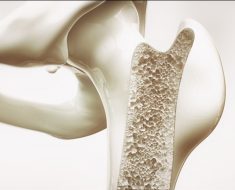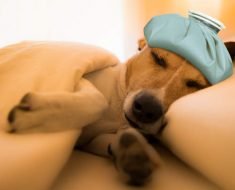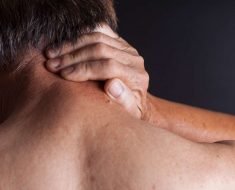Knee buckling is relatively common among adults. In one study, 11.8 percent of adults aged 36–94 reported at least one episode of knee buckling in the past 3 months. It can affect people of all ages and levels of fitness.
In this article, we look at the causes of knee buckling, exercises that can help, treatment, and when to see a doctor.
Causes

Knee buckling is a complicated condition with many different potential causes.
Many people associate knee buckling with osteoarthritis. However, one study found that more than half of the participants who reported episodes of knee buckling did not show any signs of arthritis in X-rays.
The complex structure of the knee joint can make it difficult to determine what is causing knee buckling.
The knee consists of two joints, which allow it to move in different directions. The knee has support from:
- tendons, which connect the leg muscles to the knee bones
- ligaments, which connect the knee bones together
- cartilage, which allows smooth movement of the joints and acts as a shock absorber
It is possible to damage any of these different parts, sometimes in combination with other injuries to the knee. This can lead to instability in the knee and knee buckling.
Certain factors may be related to knee buckling. These include knee pain, which can occur for a variety of reasons, and weak muscles at the front of the leg.

Certain exercises can strengthen the leg muscles and improve knee stability, which may help to prevent or reduce knee buckling.
A doctor or physical therapist can design an exercise program to address the needs of a person worried about knee buckling. This will usually focus on:
- strengthening the muscles that support the knee and keep the kneecap in proper alignment
- increasing the range of motion in the upper and lower legs
- reducing stiffness
- promoting flexibility
A typical knee rehabilitation program will run for 4–6 weeks. However, it is usually best to continue doing these exercises for as long as possible to maintain the health of the knees.
Specific exercises will stretch and strengthen:
- the quadriceps — the muscles in the front of the legs
- the hamstrings — the muscles in the back of the legs
- the calves — the muscles in the back of the lower legs
- the gluteal muscles — the muscles in the buttocks
Following a knee rehabilitation program will help a person by:
- improving their ability to bend and straighten their legs
- increasing the weight their legs can support
- building strength in their inner and outer thighs, and expanding their range of motion
It is important to start these exercises very slowly and gently. People need to gradually build up strength and flexibility in their legs and knees before moving on to tougher exercises.
However, to make progress, it is important for people to challenge themselves a little, both at home and in physical therapy sessions. It can be hard to achieve the right balance, but a trained therapist can help to ensure that the level of exertion is suitable.
People who experience knee buckling may also need to adapt their exercise habits. For example, a person with arthritis may need to switch from high-impact activities, such as running or tennis, to lower-impact activities, such as swimming or cycling.
Cycling can also help to build strength in the upper legs, which will contribute to improved stability in the knee.
Treatment

Treatment for knee buckling will depend on the cause. Common treatment options include:
- Rest, ice, compression, and elevation (RICE). This is a common home treatment for minor injuries. It involves resting the injured knee, applying ice, wrapping it snugly in a soft dressing, and elevating the leg as much as possible.
- Nonsteroidal anti-inflammatory drugs (NSAIDs). These are available over the counter and include aspirin, ibuprofen, and naproxen. They can help ease pain and limit the swelling that can occur alongside knee buckling.
- Support. Using braces, bandages, and physical therapy tape can take some of the pressure off the injured area to promote healing and help individuals continue moving while they strengthen their muscles.
- Ultrasound. Trained therapists use this technique, sometimes in combination with steroids, to help reduce the inflammation and pain that can lead to knee buckling.
- Physical therapy. Individuals can learn techniques to strengthen muscles, build endurance, and improve balance and coordination.
- Reduction. This is when a doctor or therapist manipulates a kneecap back into the correct position.
- Prescription medications. A doctor may prescribe stronger pain relievers for more severe pain and inflammation.
- Surgery. People with severe or chronic knee problems may require surgery to repair damaged ligaments, tendons, and cartilage, or to realign the kneecap.
Researchers have demonstrated that exercise programs can make a big difference to the lives of people with arthritis and knee instability. One study followed people as they took part in a 12-week exercise program focusing on muscle strength and daily functioning. The participants reported a 20–40 percent reduction in pain and interference with everyday life.
Lifestyle modifications can also help people manage knee buckling. The following may help to reduce the stress on unstable knees:
- losing weight
- taking advantage of ramps, elevators, and escalators to avoid using stairs
- using canes and other devices to assist walking

When to see a doctor
Minor knee injuries are common. Many people recover from them without medical intervention, often by trying some variation of the RICE approach or other home treatments.
However, some conditions that cause knee buckling can get worse without medical treatment. Anyone who experiences the following symptoms in addition to knee buckling should see a doctor:
- falling
- severe pain
- pain and swelling in the knee that lasts for more than a few days
- loud popping or clicking sounds with an accompanying pain
- difficulty walking or using stairs
- ongoing limitation of routine activities
- redness
- fever
Source: Read Full Article





